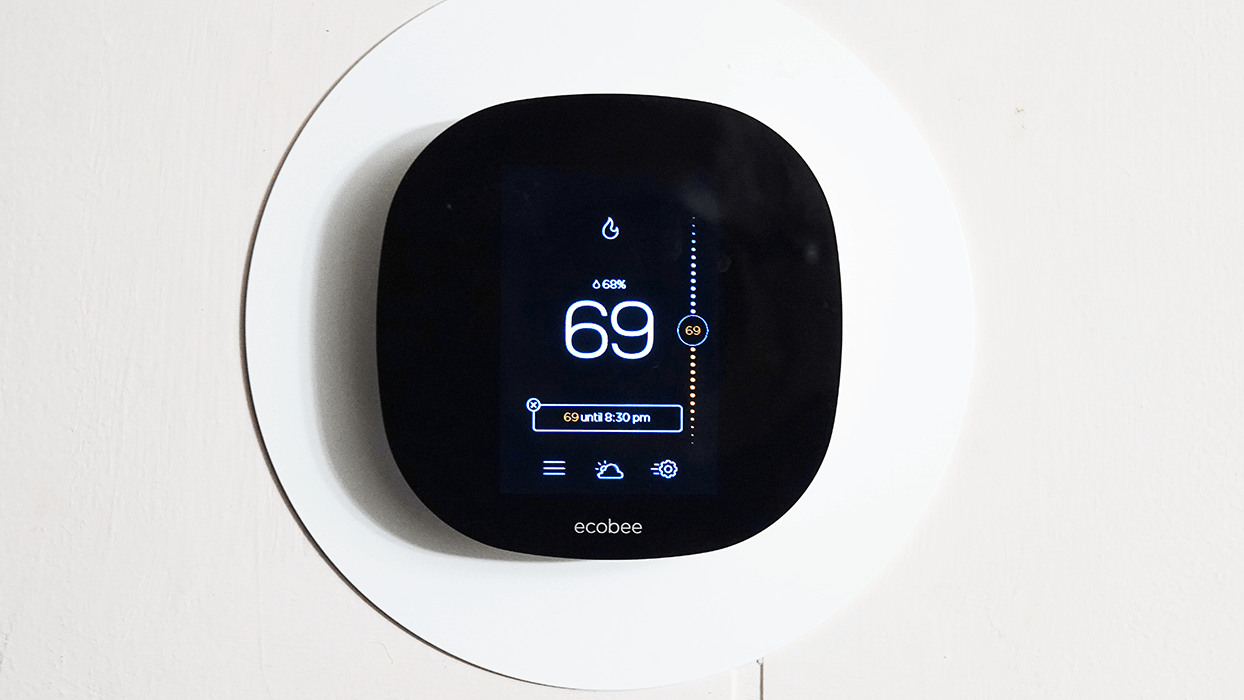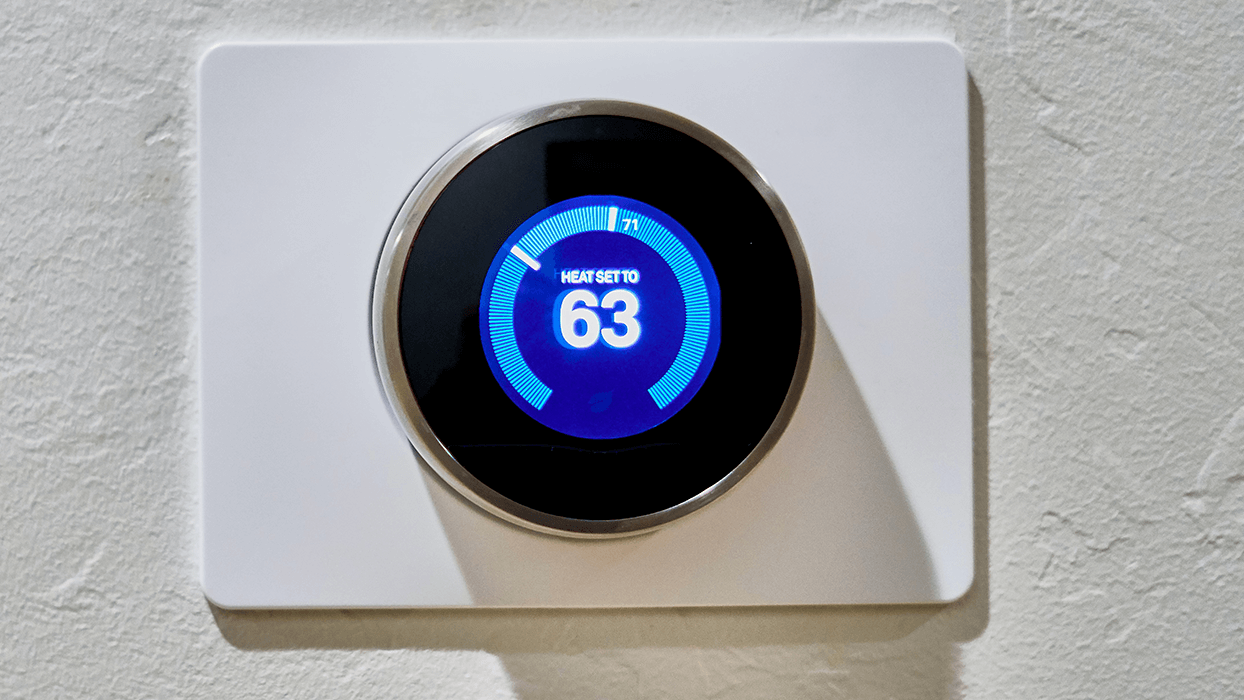This website is a participant in the Amazon Services LLC Associates Program, an affiliate advertising program designed to provide a way for websites to earn advertising revenues by advertising and linking to Amazon.com.
Smart Thermostats: The Future of Home Comfort!
Smart thermostats have become a staple in the modern smart home. These devices not only allow homeowners to control their home’s temperature remotely but also learn from their habits to optimize heating and cooling, leading to potential savings on energy bills.
5 Interesting Facts About Smart Thermostats:
- The idea of controlling home temperature remotely has been around for decades, but the integration of AI and IoT has made modern smart thermostats incredibly efficient.
- Many smart thermostats can integrate with other smart home devices, allowing for a cohesive smart home experience.
- The first-generation Nest Learning Thermostat, released in 2011, is often credited with popularizing the smart thermostat market.
- Some smart thermostats come equipped with sensors that detect room occupancy, adjusting the temperature based on where people are in the home.
- Historical tidbit: The first thermostat was invented in the 1620s by a Dutch innovator named Cornelis Drebbel. It was a mercury-in-glass thermostat used to regulate the temperature of a chicken incubator.
General Information on Smart Thermostats:
- Tips for Beginners: Ensure your home’s HVAC system is compatible with the smart thermostat you’re considering. Not all systems are, and it’s crucial to check before purchasing.
- Maintenance Tricks: Regularly update your thermostat’s software to benefit from the latest features and security patches.
- Efficiency Insights: Use the scheduling feature to set temperatures based on your daily routine, ensuring energy isn’t wasted when no one’s home.
What makes a thermostat “smart”?
A smart thermostat allows remote control via smartphones or voice commands and can learn from your habits to optimize temperature settings, potentially saving on energy costs.
Can I integrate a smart thermostat with other smart home devices?
Yes, many smart thermostats can integrate with smart speakers, lights, and other devices for a cohesive smart home experience.
How do smart thermostats help save on energy bills?
By learning your habits and optimizing temperature settings, smart thermostats can reduce energy wastage, leading to potential savings.
Home Comfort, Tailored to You: Mastering the Art of Climate Control
In the realm of home automation, the Smart Thermostat emerges as a game changer. These intelligent devices ensure your home is always at the right temperature, adjusting according to your preferences, the time of day, and even the weather outside. With energy-saving capabilities and remote access, these thermostats truly redefine home comfort.
How Did Thermostats Get So Smart?
Did you know the concept of automated temperature control dates back to the 1600s, with the invention of the mercury thermostat? Fast forward to today, and smart thermostats not only monitor temperature but also learn from your habits, integrate with other smart home devices, and can be controlled from halfway around the world via a smartphone.
Elevate your home’s comfort with a smart thermostat. Whether you’re snuggling up on a cold winter day or seeking relief from the summer heat, these devices ensure your sanctuary is always just the way you like it. Dive into a world where luxury meets convenience, and every day feels just right!
VR Headsets: A Spectrum of Choices
High-End Choice:
Ecobee Smart Thermostat Premium
| Preview | Product | Rating | |
|---|---|---|---|

|
New 2022! ecobee Smart Thermostat Premium with Siri and Alexa and Built in Air Quality Monitor and... | Check Amazon Price |
The Ecobee Smart Thermostat Premium is feature-rich, offering controls for heating and cooling, smart speaker capabilities, air quality monitoring, and support for numerous third-party platforms.
Pros:
- Supports Alexa, Google Assistant, HomeKit, IFTTT, and SmartThings
- Doubles as a home security device and smart speaker
- Monitors air quality
Cons:
- Pricey
- Some features require a subscription
Mid-Range Choice:
Nest Learning Thermostat (3rd Generation)
| Preview | Product | Rating | |
|---|---|---|---|

|
Google Nest Learning Thermostat - Programmable Smart Thermostat for Home - 3rd Generation Nest... | Check Amazon Price |
The third-generation Nest Learning Thermostat boasts a sleek design and is loaded with features. It offers geofencing support, a furnace monitor, and interacts with other Nest and third-party devices.
Pros:
- Sleek design
- Supports Alexa, Google Home, and IFTTT
- Loaded with features
Cons:
- Lacks remote room sensors
- Pricey
Budget-Friendly Choice:
Amazon Smart Thermostat
| Preview | Product | Rating | |
|---|---|---|---|

|
Amazon Smart Thermostat – Save money and energy - Works with Alexa and Ring - C-wire required | Check Amazon Price |
The Amazon Smart Thermostat is an affordable option that allows homeowners to control their heating and cooling system via phone or Alexa voice commands.
Pros:
- Affordable
- Supports Alexa voice commands
- Reports energy usage
Cons:
- Not compatible with Google Assistant, HomeKit, or IFTTT
- Lacks remote sensors


Conclusion:
Smart thermostats are more than just a luxury; they’re a step towards a more efficient and comfortable home. With the ability to learn from our habits, integrate with other smart devices, and offer remote control, they’ve transformed the way we think about home temperature control.
– Content on this site was created by or with the help of the ChatGPT and the OpenAI project.
– Some stock images attributed to Unsplash.com
This website is a participant in the Amazon Services LLC Associates Program, an affiliate advertising program designed to provide a way for websites to earn advertising revenues by advertising and linking to Amazon.com.









